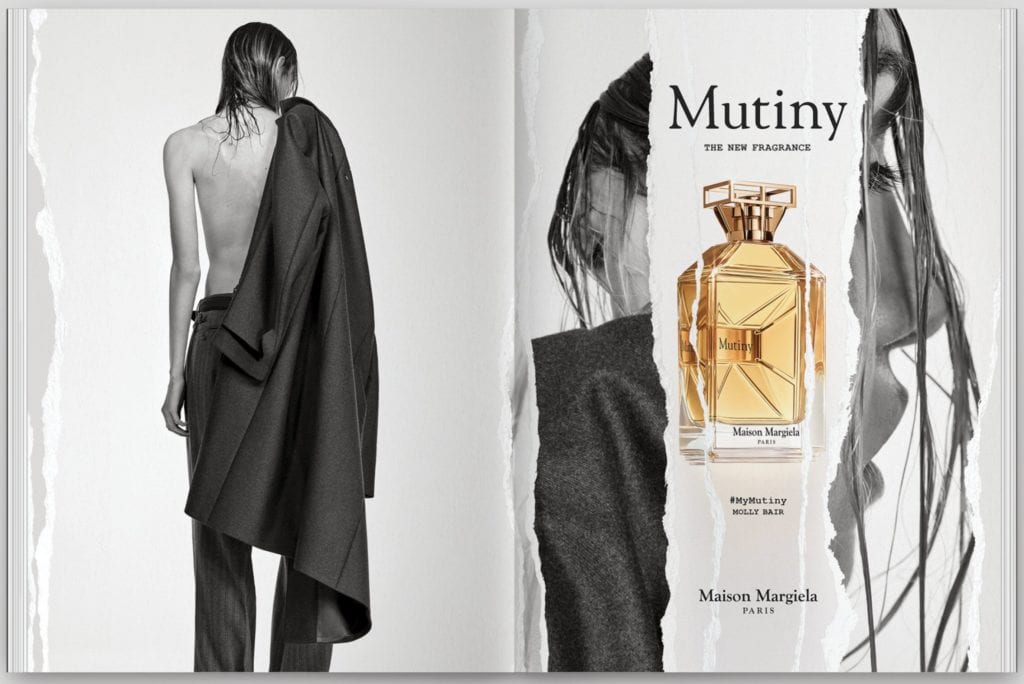John Galliano has inked a new contract with Maison Margiela in a deal that will extend the duration of his tenure at the Paris-based brand by “several years.” Renzo Rosso, president of OTB, the company that owns Margiela, confirmed the renewal on Wednesday (and also noted that the brand’s sales have doubled since Galliano came in in 2014, thanks, in large part to accessories and footwear), but the length and specific terms of Galliano’s contract, including compensation, have not been disclosed, and given the industry’s longstanding practice of keeping the lucrative details of fashion’s top creative directors under wraps, chances are, they will not be.
Despite the largescale lack of publicly-available information about what exactly goes into the contracts signed by fashion’s top creatives and the industry’s biggest brands, the inevitable rounds of musical chairs – which have seen designers jump from one brand to another with increased frequency in recent years – and the employment-specific litigation that occasionally follows from the movement of these upper-echelon creatives has shed light on some of the key elements at play … from the multi-million dollar salaries to the notoriously-stringent (and oft-criticized) non-compete provisions.
In terms of pay, one of the two lawsuits that former Saint Laurent head creative Hedi Slimane filed against Yves Saint Laurent’s parent company Kering within two months of the expiration (and non-renewal) of his employment contract in April 2016 “opened a window into the lucrative contracts star designers get for their sought-after input in the fashion industry,” Bloomberg stated last year. In a strikingly public airing of messy divorce of sorts, Slimane’s lawsuit, which went before a commercial court in Paris, revealed just how much Slimane was netting in a single year.
In response to receiving “less than 667,000 euros” ($823,000 at the time) in compensation for his final year at the head of the creative totem pole at Saint Laurent, Slimane filed suit, arguing that Kering owed him an additional sum to the tune of roughly 10 million euros, in large part because the earlier figure did not take into account the minority ownership stake that he had in YSL as set forth in his contract.
According to Bloomberg, Kering “thought it could pay the king of skinny jeans less than $1 million for his last year at Saint Laurent,” but “they were wrong.” Siding with Slimane in the spring of 2018, the court determined that the creative director “had been underpaid by as much as 9.3 million euros ($11.5 million at the time) after taxes for his last year of service,” bringing his annual salary – including his ownership stake – to more than $10 million. It was also revealed by way of a related court ruling that during his tenure at Saint Laurent, Slimane had a contract clause “guaranteeing [his] compensation after taxes of at least 10 million euros a year,” mostly thanks to an agreement to buy shares in the company and sell them back at a higher price.
Meanwhile, in the U.S., a 2016 lawsuit between Oscar de la Renta and Carolina Herrera that centered on Herrera’s former senior designer and Oscar de la Renta’s now-co-creative director, Laura Kim, revealed that Kim’s position at de la Renta came with a $1 million starting annual salary and “the opportunity to get up to a $300,000 bonus,” according to the New York Times.
What if designers and brands opt to part ways before the conclusion of a contract? There is at least one example of that, and it entailed a hefty payment (likely to avoid potential breach of contract litigation). As Women’s Wear Daily reported – citing French court documents – in late 2013, when Balenciaga and its longtime creative director Nicolas Ghesquière parted ways, Balenciaga paid Ghesquière “6.6 million euros, or $8.7 million at current exchange, as compensation for breaking his latest employment contracts with [the brand in November 2012], signed in 2010 and 2012.”
WWD revealed that Ghesquière “also walked away with 32 million euros, or $42.3 million, for the purchase of his 10 percent stake in the company, granted to him when then-parent Gucci Group bought Balenciaga in 2001.”
Looking beyond compensation, another one of the core elements in fashion’s most coveted contracts comes in the form of the limits that are routinely placed upon what creative directors and other key position-holders can and cannot when their tenure is up. i.e., non-compete provisions. These restrictive clauses that appear in employment contracts dictate how quickly an individual may begin a new job and the type of work that he/she may accept upon departing from a company in order to prevent the transmission of valuable trade secret information, such as future designs, marketing plans, etc.
Raf Simons, for example, was required to serve out a nine-month non-compete before completing his transition from creative director of Christian Dior to the head position at Calvin Klein in August 2016 due to a strict non-compete with LVMH Moët Hennessy Louis Vuitton-owned Dior. A few years before that, Nicolas Ghesquière assumed his position at Louis Vuitton on November 4, 2013, a year and a day – exactly – after departing Balenciaga, which suggests the existence of a non-compete, while Riccardo Tisci waited just over a year to join Burberry in March 2018 after leaving Givenchy in February 2017, seemingly making one year the approximate duration of choice for fashion’s most esteemed European brands.
There are, of course, far less peaceful examples. (Though, to be fair Ghesquière’s departure from Balenciaga ended up being a $9.5 million lawsuit of its own).
Consider the since-settled lawsuit that erupted between Carolina Herrera and Oscar de la Renta in 2016, which centered on Laura Kim’s six-month non-compete clause, one that she allegedly violated when she joined the Carolina Herrera team in October 2015. And still yet, one of the two previously mentioned lawsuits initiated by Hedi Slimane against Kering stemmed from the applicability of the non-compete clause in his contract.
Slimane filed suit in a French labor court against his former employer’s parent company in June 2016, alleging that Kering failed to honor the non-compete agreement in his contract. Interestingly enough, instead of wanting to get out of his non-compete in order to begin work elsewhere, Slimane wanted Kering to uphold the non-compete and as required by law, compensate him for the entirety of its duration.
Kering spoke out after Slimane filed suit, stating that it had, in fact, lifted the non-compete clause, a common contractual provision that would have otherwise barred Slimane from working elsewhere for a set period of time following the culmination of his contract with YSL. By lifting the non-compete provision, Kering freed Slimane of the contractual limitation that would prevent him from working for a competing fashion brand for a set period of time (likely a year or so). It also served to cut off compensation to Slimane, which would have sustained for the duration of the non-compete period, as companies are required to pay the individual who is being kept from competing (i.e., working).
Slimane ultimately began his tenure at LVMH-owned Celine in January 2018, almost two years after he left Saint Laurent, with the matter seemingly resolved just in time for a new non-compete battle, this time between LVMH and Lanvin over Bruno Sialelli, the 31-year old former LVMH-owned Loewe creative, who joined Lanvin in January.
One final fight between Slimane and Kering sheds light on an additional important element that is included in nearly all creative contracts: an explicit statement about who owns the rights in the works created during an individual’s employment term. In nearly all instances, creatives sign away their rights in the output and intellectual property rights associated with that to the employer brand. While there appeared to be no question over Saint Laurent’s ownership of the Hedi Slimane-designed garments and accessories, the parties did fight over the rights in the photographs in Saint Laurent’s online archive, many of which were lensed by Slimane. Hence, the large-scale wiping of YSL’s Instagram account upon the announcement of Slimane’s successor Anthony Vaccarello.
With all of the foregoing fights in mind, the various provisions in the contracts of fashion figures have proven to be a growingly contentious in recent years, particularly in a non-compete capacity since these terms are being applied to the contracts of an increasingly large pool of individuals (i.e., not just creative directors and CEOs), their durations (at least in Europe) are being drawn out, and the definition of “competitor” is being broadened.
As a result, the contents of these legal documents, ones that are almost always dealt with in a largely confidential, behind-the-scenes setting, are garnering mainstream attention, and with that, aspects of fashion’s notoriously kept-quiet contracts are coming to light.











